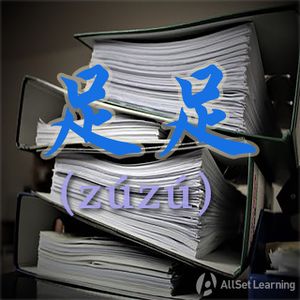Difference between revisions of "Expressing "a full" with "zuzu""
| Line 31: | Line 31: | ||
[[Category: C1 grammar points]] | [[Category: C1 grammar points]] | ||
| − | {{Basic Grammar| | + | {{Basic Grammar|足|C1|足足 + Verb|姚明 身高 足足 有 2.26米。|grammar point|ASGJIFI9}} |
{{Rel char|足}} | {{Rel char|足}} | ||
{{POS|Adverbs}} | {{POS|Adverbs}} | ||
{{Used for|Emphasizing a number}} | {{Used for|Emphasizing a number}} | ||
Revision as of 09:44, 10 April 2013
| This article is a stub. Editors can help the Chinese Grammar Wiki by expanding it. |
Sometimes in English, we may want to emphasize how big, small, long, etc. something is percieved to be. We have all heard expressions like "he was a full 300 lbs.", or "he was all seven feet tall." The "a full" and "all" in these sentences have an equivalent expression in Chinese: 足足.
Structure
All you have to do is put 足足 either in front or after the verb. Remember that 足足 adds emphasis to what you are saying, so you should always use it with a number. Some more commonly used verbs are 有 and 等.
足足 + Verb
Verb + 足足
Examples
- 姚明 身高 足足 有 2.26米。
- 昨天 我的 约会 不 太 好,她 让 我 等 足足 两 个 小时。
- 怪不得 他 说 汉语 说 得 那么 好,他 住在 中国 足足 十 年 的 时间!



